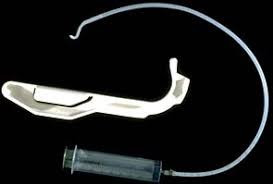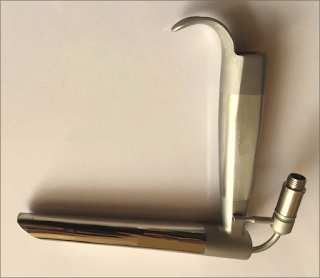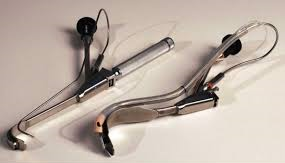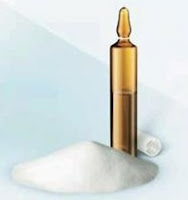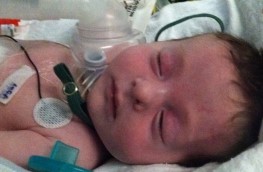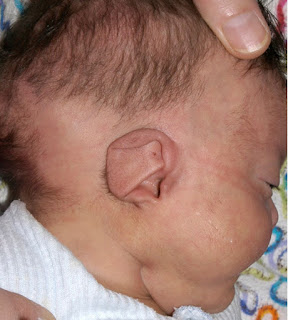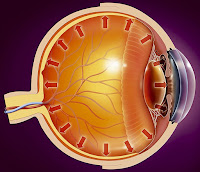Fat Embolism Syndrome (FES)
➧ Fat embolism can be difficult to diagnose. It most often follows a closed fracture of a long bone but there are many other causes.
Epidemiology:
➧ Incidence of this complication ranges from 0.5 to 11% in different studies. It varies considerably according to the cause. Patients with fractures involving the middle and proximal parts of the femoral shaft are more likely to experience fat embolism. Age also seems to be a factor with young men at the highest risk.
Etiology:
1-Fractures: Closed fractures produce more emboli than open fractures. Long bones, pelvis, and ribs cause more emboli. Sternum and clavicle cause less. Multiple fractures produce more emboli.
2- Orthopedic Procedures: Intramedullary nailing of long bones, Fixation of cemented hip prosthesis.
3-Massive soft tissue injury
4-Severe burns
5-Liposuction
6-Bone marrow biopsy
7-Bone marrow harvesting and transplant
8-Cardio-pulmonary bypass
9-Non-traumatic settings occasionally lead to fat embolism. These include conditions associated with:
-Fatty liver
-Acute pancreatitis
-DM
-Osteomyelitis
-Bone tumor Lysis
-Pathological fractures
-Sickle cell crisis (causing bone infarcts)
-Decompression sickness
-Prolonged corticosteroids therapy
-Cyclosporine A solvent
-Parenteral lipid infusion
Sevitt’s classification:
1-Subclinical (Incomplete) form: Fat emboli present in blood and lungs, no symptoms/signs
2-Non-fulminant (Classic) form: Pulmonary dysfunction, cerebral dysfunction, petechiae
3-Fulminant form: Rare, rapid onset (within hours) of acute cor-pulmonale, respiratory failure, coma, and death.
Principal clinical features (triad) of FES:
1-Respiratory failure (dyspnea and hypoxia)
2-Cerebral dysfunction (confusion)
3-Petechiae
➧ Clinical features usually present between 24-72 h. after trauma (lucid interval). This is especially after fractures, when fat droplets act as emboli, becoming impacted in the pulmonary microvasculature and other microvascular beds, especially in the brain.
➧ Embolism begins rather slowly and attains a maximum in about 48 h.
➧ The initial symptoms are probably caused by mechanical occlusion of multiple blood vessels with fat globules that are too large to pass through the capillaries.
➧ The vascular occlusion in fat embolism is often temporary or incomplete as fat globules do not completely obstruct capillary blood flow because of their fluidity and deformability.
➧ The late presentation is thought to be a result of hydrolysis of the fat to more irritating free fatty acids which then migrate to other organs via the systemic circulation.
➧ It has also been suggested that paradoxical embolism occurs from shunting.
Clinical Presentation:
➧ There is usually a latent period of 24-72 h. between injury and onset.
➧ Symptoms: There is vague pain in the chest and shortness of breath.
➧ Signs: The onset is sudden, with:
-Restlessness
-Fever occurs, often at more than 38.3° C with a disproportionate tachycardia.
-Drowsiness with oliguria is almost pathognomonic.
➧ CNS signs: including a change in the level of consciousness, are common. They are usually non-specific and have the features of diffuse encephalopathy with acute confusion, stupor, coma, rigidity, or convulsions. Cerebral edema contributes to neurological deterioration.
Diagnostic Criteria:
A) Gurd's and Wilson’s Criteria:
-Diagnosis requires at least one sign from the major criteria and at least four signs from the minor criteria. (Table 1)
-Diagnosis requires a score of more than 5. (Table 2)
C) The clinical diagnosis is assured if all three of the following criteria are present within 72 h. after traumatic fracture:
1-Unexplained dyspnea, tachypnea, arterial hypoxia with cyanosis, and diffuse alveolar infiltrates on chest X-ray.
2-Unexplained signs of cerebral dysfunction, such as confusion, delirium, or coma.
3-Petechiae over the upper half of the body, conjunctiva, oral mucosa, and retina.
Differential Diagnosis:
➧ Dyspnea, hypoxia, and abnormal CXR: can occur with thrombo-embolism and pneumonia.
➧ Cerebral dysfunction: can occur with hypoxia or meningitis but the rash of meningococcal septicemia is all over and spreads rapidly. It can also occur as a late feature of head injury.
➧ Thrombotic Thrombocytopenic Purpura (TTP).
Investigations:
CBC:
-Hematocrit: is decreased, occurs within 24-48 h., and is due to intra-alveolar hemorrhage.
-Platelets: are decreased.
Serum Lipase: is increased, but this is not pathognomonic as it occurs in any bone trauma.
Serum Calcium: is decreased.
Cytological Examination: urine, blood, and sputum may detect fat globules that are either free or in macrophages. This test has low sensitivity and a negative result does not exclude fat embolism.
Arterial Blood Gases: will show hypoxia, PaO₂ usually less than 60 mmHg, and hypocapnia. Continuous pulse oximeter monitoring may enable hypoxia from fat embolism to be detected in at-risk patients before it is clinically apparent.
ECG: Ischemia, Rt. Ventricular strain, Rt. Axis deviation, RBBB, Arrhythmia.
Chest X-ray: may show evenly distributed, fleck-like pulmonary shadows (Snow Storm appearance), increased pulmonary markings, and dilatation of the right side of the heart.
CT Head: (to rule out intracranial pathology).
CT Chest: (to rule out chest pathology).
Management:
A) Supportive
1-Ensuring good arterial oxygenation: High flow rate of oxygen is given to maintain the arterial oxygen tension in the normal range.
2-Restriction of fluid intake and Diuretics: to minimize fluid accumulation in the lungs so long as circulation is maintained.
3-Maintenance of intravascular volume: is important because shock can exacerbate the lung injury caused by FES. Albumin has been recommended for volume resuscitation in addition to the balanced electrolyte solution, because it not only restores blood volume but also binds fatty acids, and may decrease the extent of lung injury.
4-Mechanical ventilation (APRV) and Positive End-Expiratory Pressure (PEEP): may be required to maintain arterial oxygenation.
B) Pharmacological
1-Corticosteroids: Methylprednisolone (membrane stabilizer, decreases endothelial damage caused by free fatty acids).
2-Low dose heparin: 2500 u / 6 h. (reduce the degree of pulmonary comprise and intravascular coagulation despite the risk of hemorrhage and intravascular lipolysis).
3-Dextran-40: (decreases intravascular thrombosis when ESR is elevated).
4-Ethanol: (decreases lipolysis)
5-Dextrose: (decreases free fatty acid mobilization)
6-DVT prophylaxis
7-Nutrition
C) Surgical:
1-Prompt surgical stabilization of long bone fractures within 24 h. reduces the risk of the syndrome.
2-Use of vacuum or venting during reaming of long bones.
3-Prophylactic IVC filter in at-risk patients.
Prognosis:
➧ The mortality rate from FES is 5-15%. Even severe respiratory failure associated with fat embolism seldom leads to death.
➧ The prognosis is worse in older patients and those with more severe injury but is not affected by gender.
➧ Criteria of bad prognosis: Sevitt’s class, Serum lipase, Lipuria, ARDS.
Prevention:
➧ Early immobilization of fractures seems to be the most effective way of reducing the incidence of this condition.
















